Dear Josephine,
Yesterday your father shared the news that your wonderful mom, Samantha, passed in her sleep early Christmas morning. Though we knew your mom had been battling cancer for a long time with incredible bravery, we still can’t believe we won’t see her again and our hearts are broken. We know our grief and shock are nothing compared to the loss you and your dad are facing.
Over the next days, months, and years many of those who knew and loved your mom will share stories about her so you may know her better through their memories. They will tell you about her childhood, college escapades, and days as a daring derby girl. They will reflect on her love for your dad, her joy in motherhood, her professionalism at work, her commitment to social justice.
Those of us who knew your mom through her advocacy with Little Lobbyists have been sharing our memories with one another, paying tribute to the wonderful person she was. We’d like to honor your mom’s memory by telling you how much we loved her and how – because of her love for you – she worked to change our country for the better.
Your mom met up with us in 2017 when the political party in power was trying to destroy our country’s health care protections, threatening our kids with complex medical needs and disabilities access to the care they needed to survive and thrive at home instead of living in a medical facility or institution. (We hope by the time you read this letter that idea sounds absurd, and that our country finally guarantees health care as the right your mom and all the Little Lobbyists believe it is.) That summer, a small group of families – your mom and dad included – knew it was up to us to protect all our children. We showed up on Capitol Hill to tell our stories. A reporter who wrote about our families gave us the name “Little Lobbyists” in honor of kids like you.
To paraphrase our co-founder Elena (who befriended your mom a year earlier in the local trach group), your mom knew there wasn’t a thing she’d change about you, but there were countless things she would change about our country for it to become the place you need to thrive. She took you with her to Capitol Hill, so members of Congress could meet you and see whose life was at stake in the votes they took. She wanted legislators to understand that a better future is possible for ALL of us with the right policies.
Your mom’s warmth opened the door, and her determination got you both through it. She made sure you met future and past presidential candidates, including our first female Black and Asian Vice President, so you’d be represented by those in power. She gave powerful speeches in the Capitol and countless interviews to reporters, telling your family’s story over and over again.
She never, ever gave up.
Everyone who met your mom loved her. She radiated warmth and kindness and could make the most nervous and new-to-advocacy feel like they belonged. Even in serious situations, she brought joy with her — dressing you up in the most adorable tiny pink Doc Martens, trick-or-treating in the Senate, celebrating victories small and large. She kept in touch. She always showed up.
Little by little, you and your mom and all our Little Lobbyists families changed hearts and minds. We saved our health care protections and are working to create the change our country needs to be worthy of you as you grow. Our deepest sorrow is knowing you will grow up without your mom beside you, where she most wanted to be.
As you face the challenges and triumphs in your future, know that our Little Lobbyists family will always be here for you. Most of all, know how much of your mom is part of you.
Your smile has your mom’s open, gracious warmth. Your deep brown eyes have her joyful, mischievous sparkle – always ready to get into “good trouble.” Most of all, you have her determination. Your mom frequently beamed with pride when sharing your determination to reach each new milestone – eating, walking, climbing – and we all knew your spirit came from her.
Dear Josephine – stay determined. Stay open and warm, joyful, a little mischievous, and always ready for good trouble. We promise we will keep showing up for you and all our families – in honor of your mother’s indomitable spirit – to create a country worthy of us all.
All our love, always,
Your Little Lobbyists family
“The minute I met her I felt like we’d been friends forever. She was a bright and fierce force of nature. So much so that when you came within 50 feet of her she had her own gravity that pulled you in. She was a badass, an amazing friend and a person who always told it like it is.” - Tasha
“Sam was an amazing friend and mom. You could always depend on her, and we could talk for hours. She used to tell me so many stories about Jo, and man, she loved that kid. Sam was love and fire and determination- an incredible person.” - Caroline
“Sam was one of the first moms to welcome me into the Little Lobbyists crew. I remember sitting with her at an event and asking her a million questions about her home health nurses. She’s a big part of the reason I’m about to start back to work as a pediatric home health nurse.” -Alison
“Sam was so fun, and so kind. I’ll never forget how she drove over an hour to come to my daughter’s skateland fundraiser for Lymphoma. She showed up with a huge smile and an even bigger hug. She was wearing her derby girl best and had attached rainbow lights to Jo’s wheelchair. It was pure joy to watch her fly around the rink.” - Laura
“I was immediately impressed with Sam's sense of humor and her dedication to saving health care. No matter what, Sam was up for advocacy, even as she and Jo each dealt with their medical needs. I wish I'd had longer with her.” - Jeneva
“Sam was my favorite kind of person from the moment we met: equal parts kind and badass, thoughtful and spontaneous, funny and serious. She was a bold leader who knew she was part of something much bigger than herself, always making others feel welcomed. Truly one of a kind. We bonded over our feisty daughters (often joking about how they were the boss of us) and we never forgot what was truly important.” - Elena






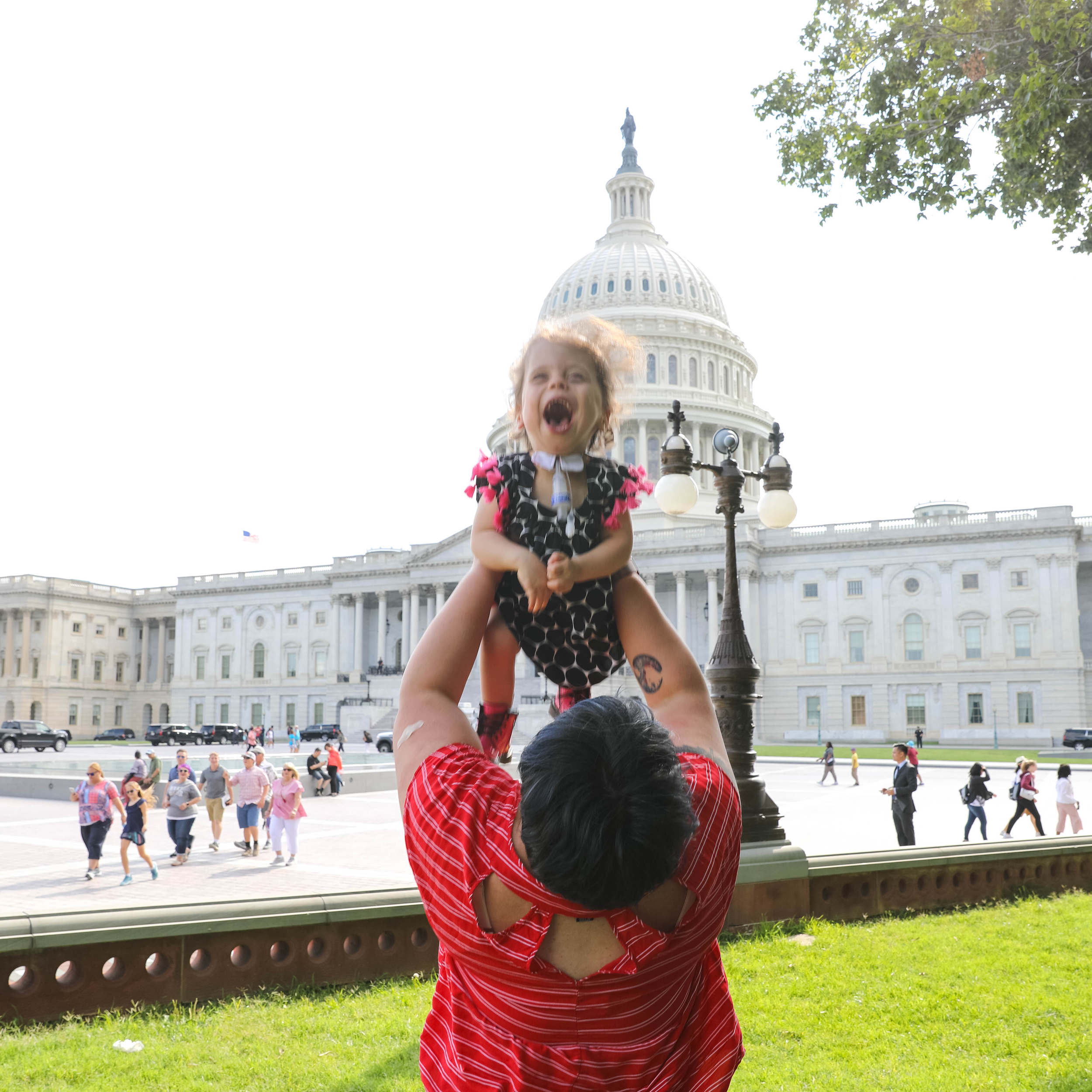
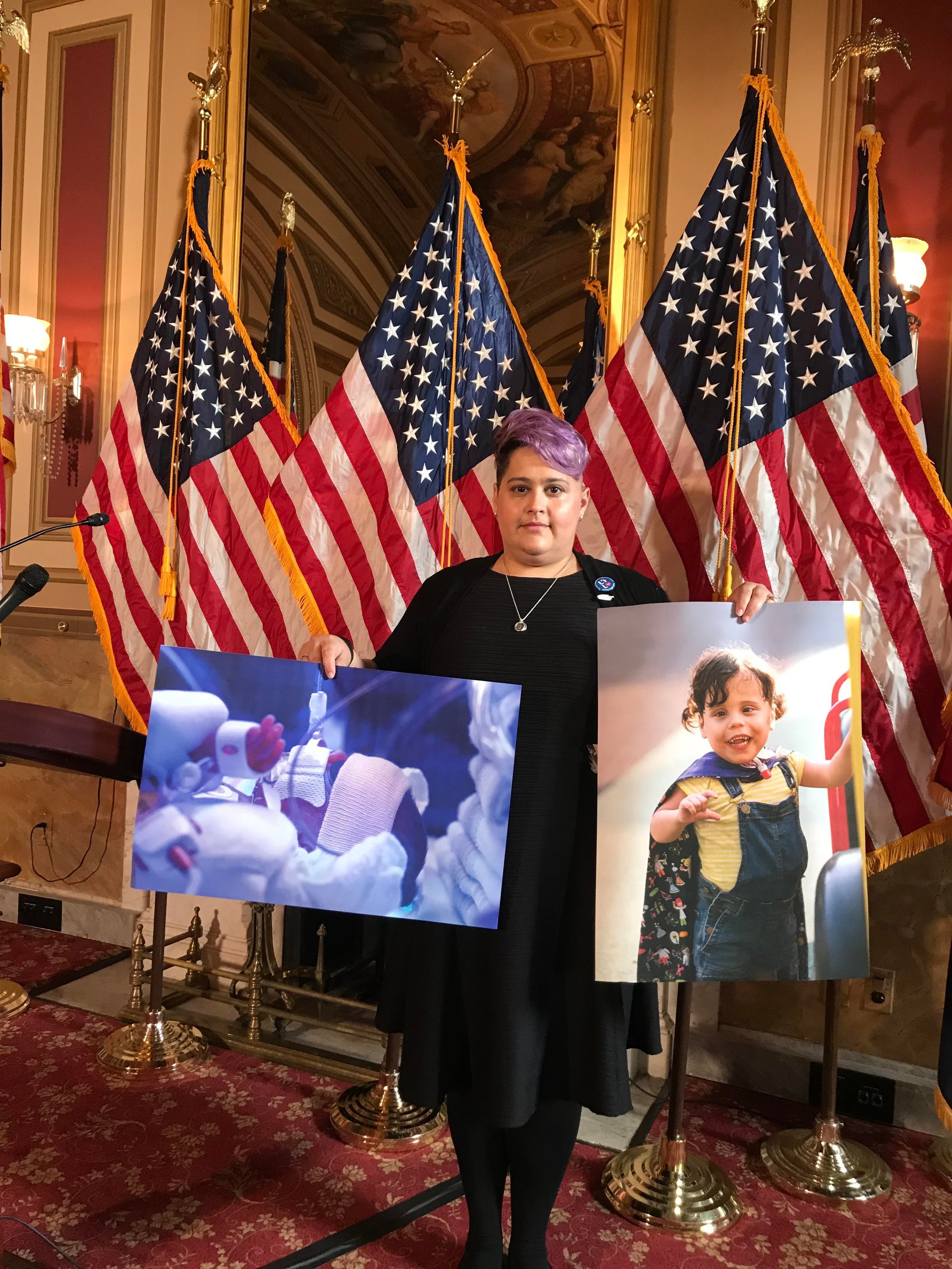
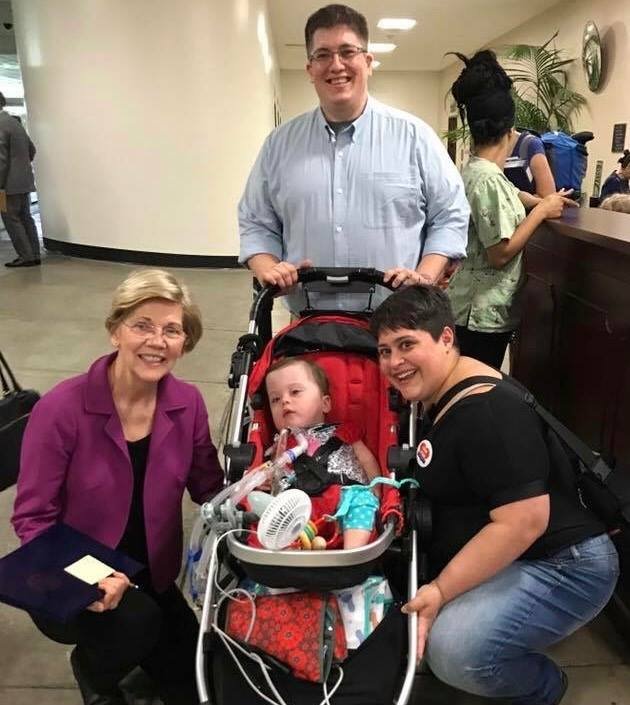
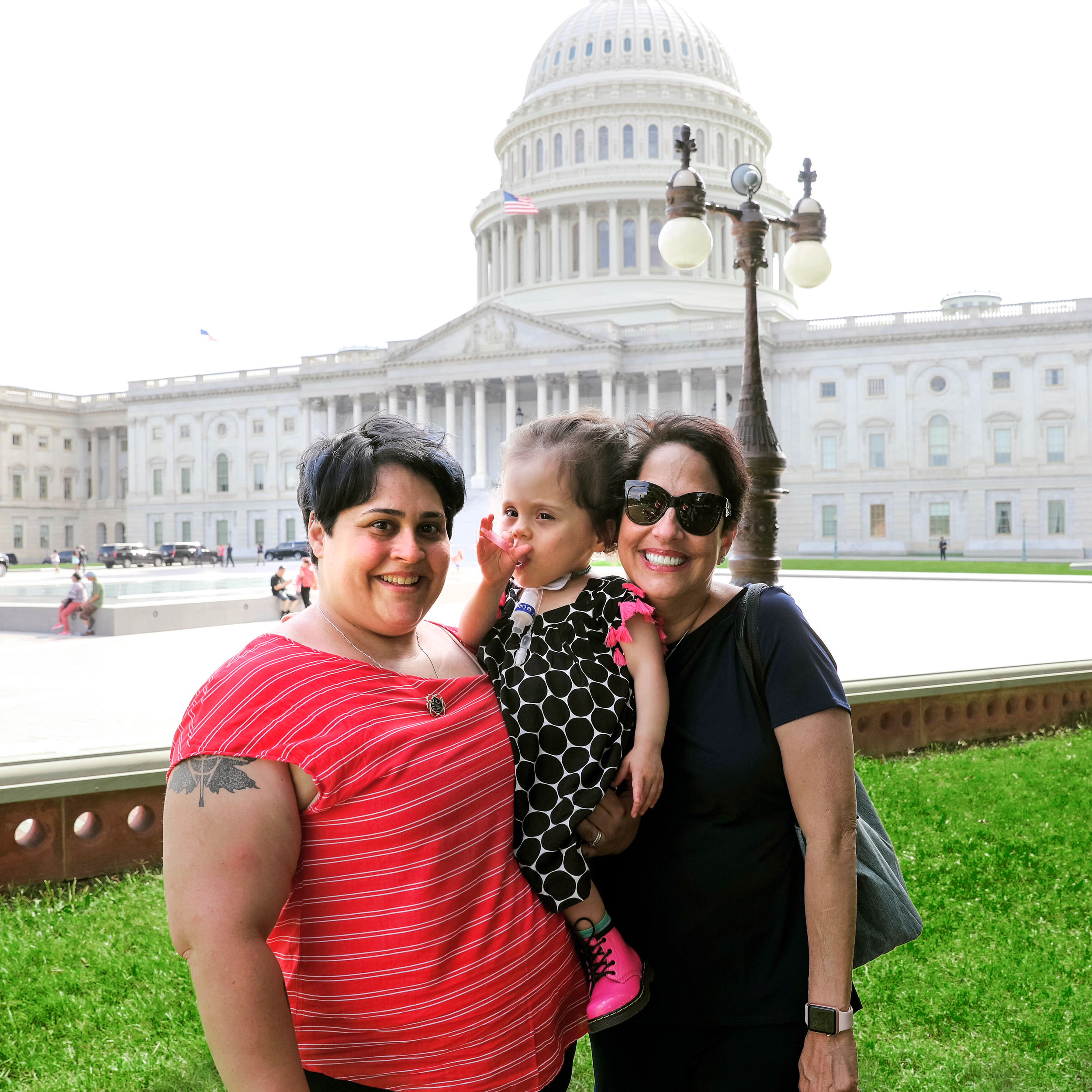
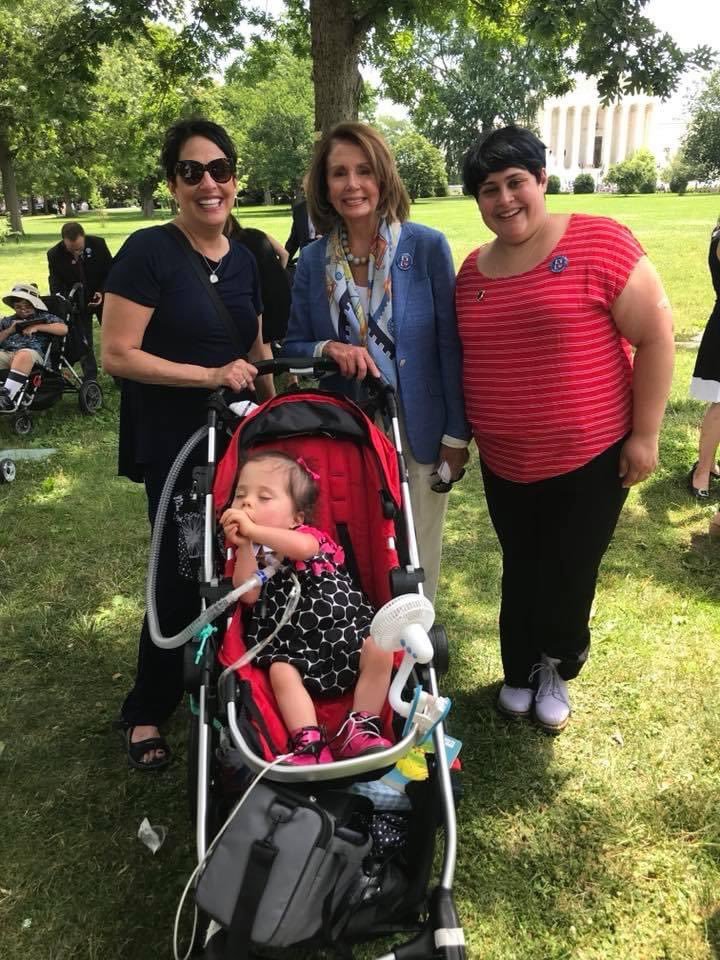

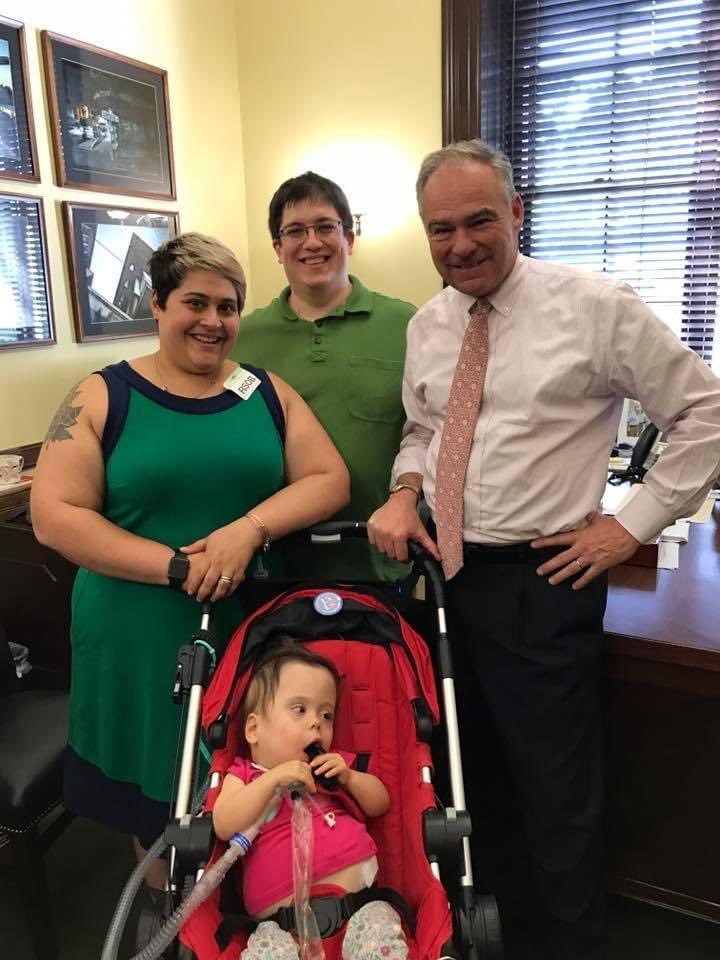
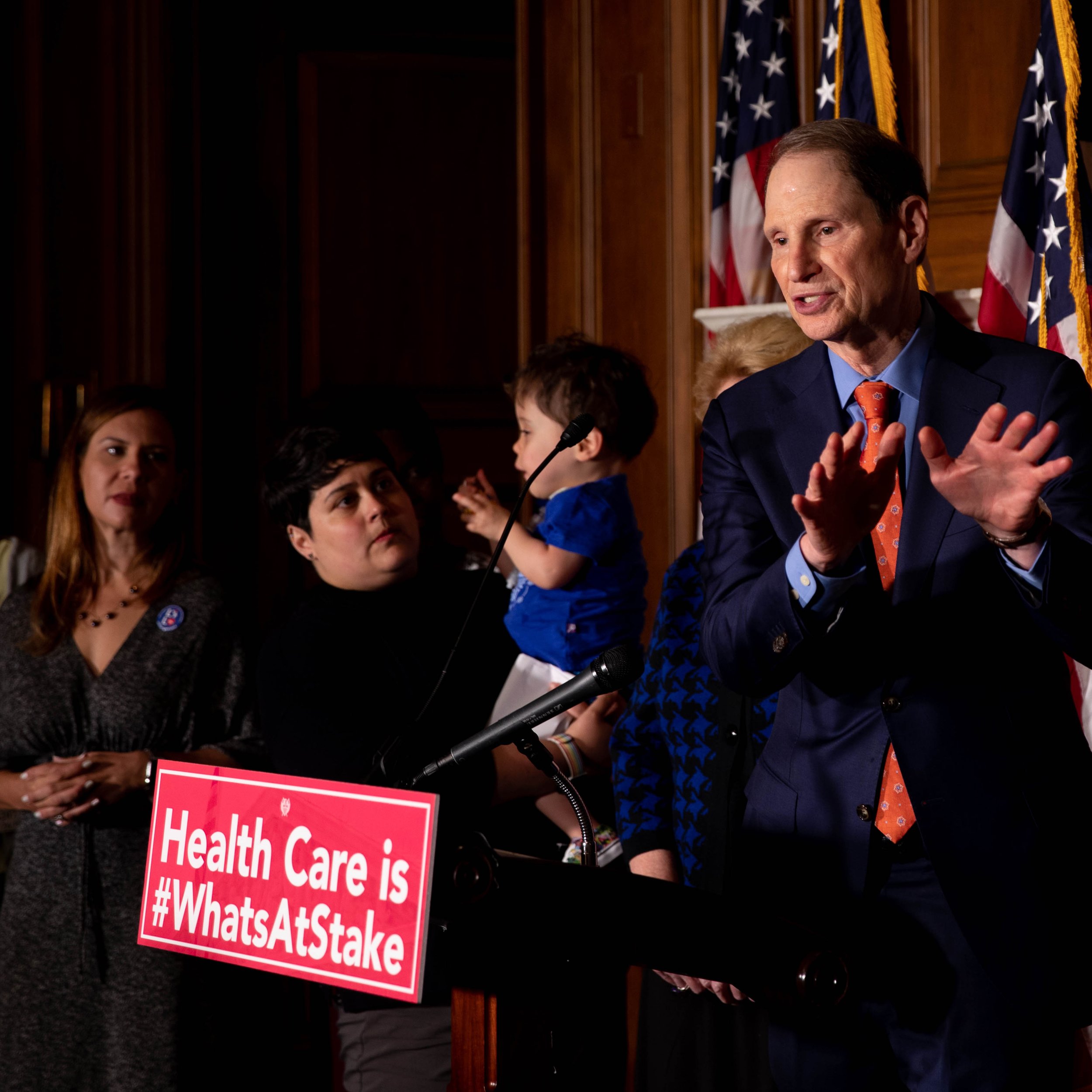
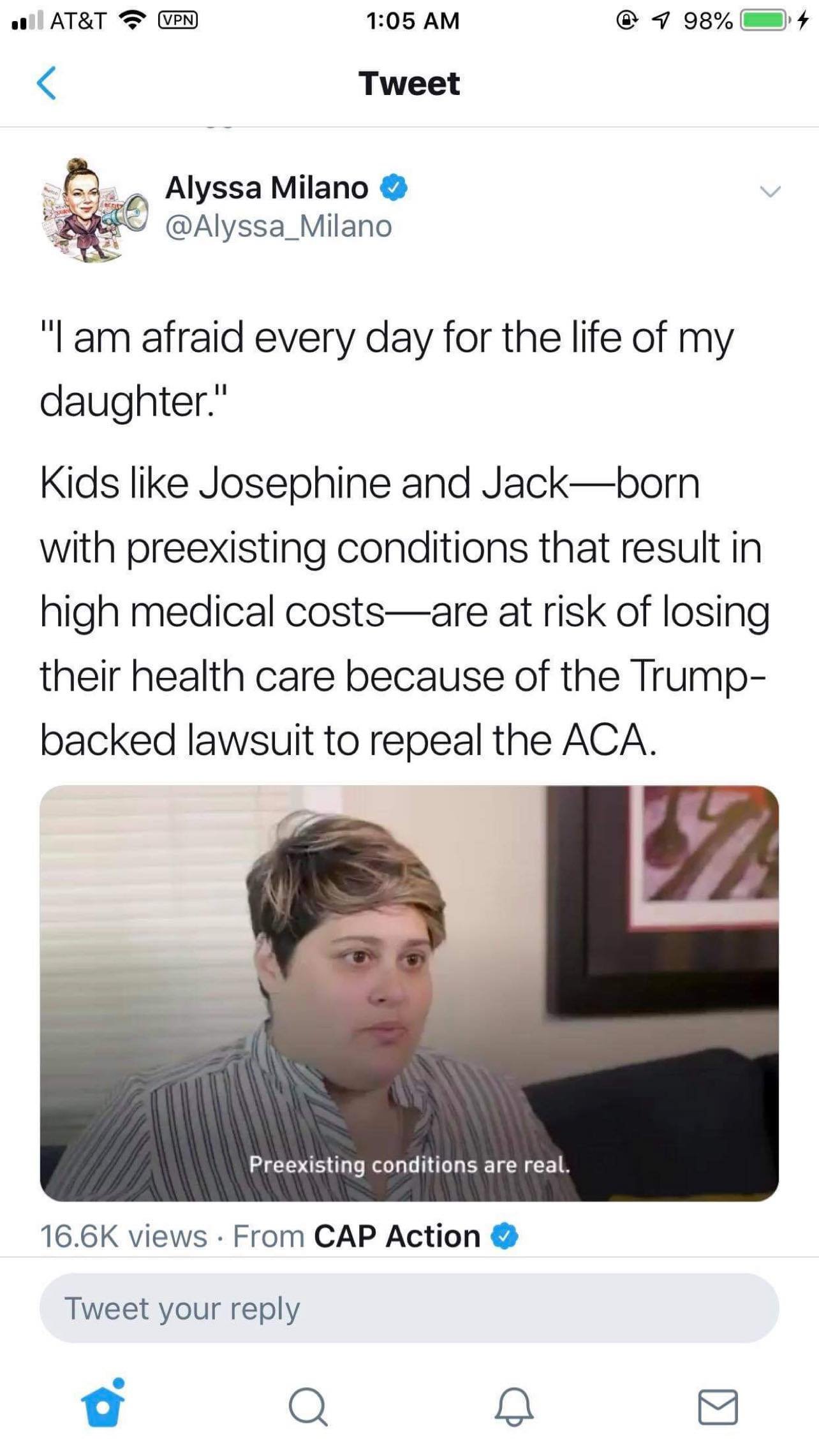
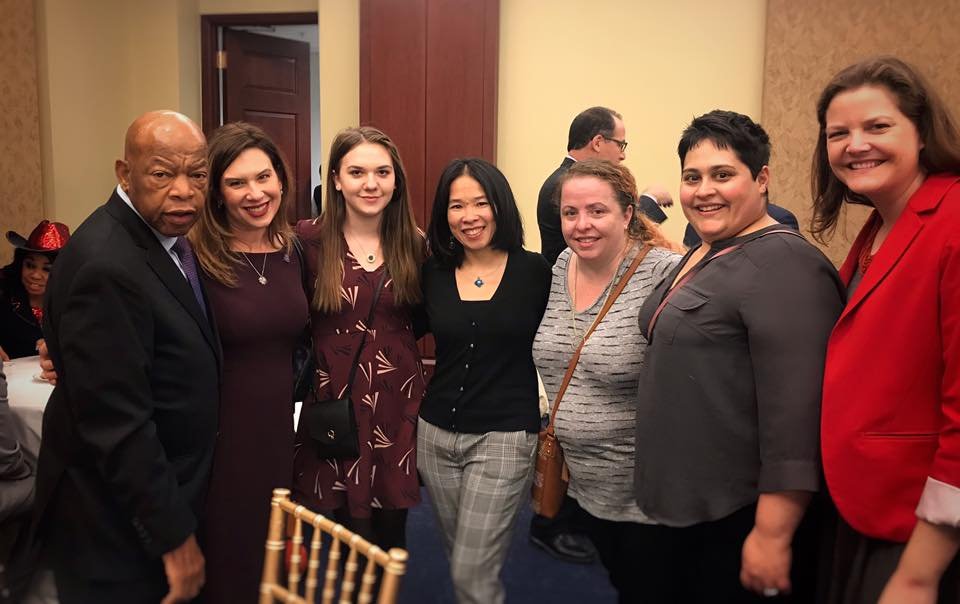

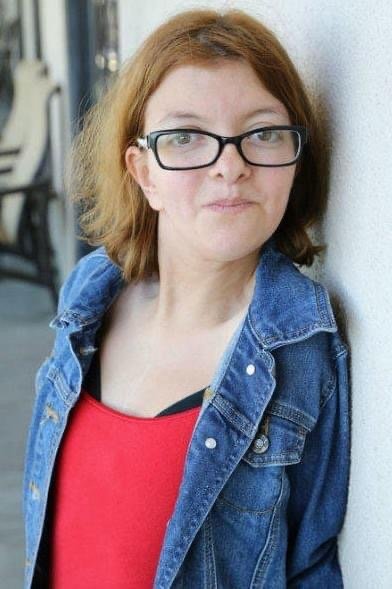
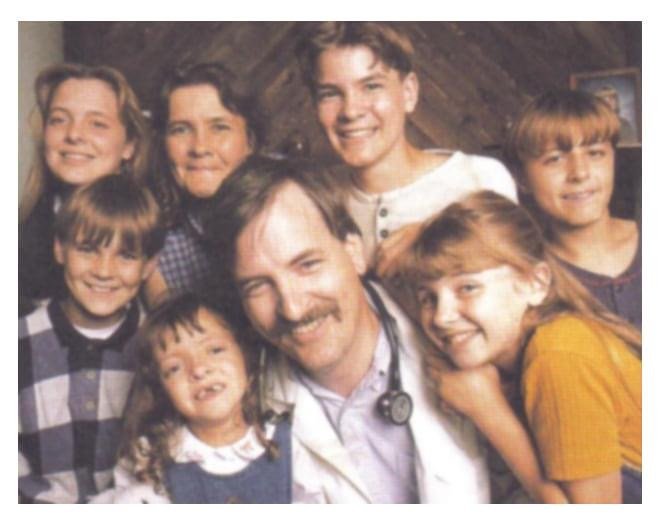



![Myka holding her vaccine card. [image description: A light-skinned girl with shoulder-length blond hair holds up her vaccination card. She is standing outside a chain drug store, with signs on its windows. She wears a striped t-shirt and denim shorts.]](https://images.squarespace-cdn.com/content/v1/59d8124080bd5eadd869b8b7/1634316674792-7G0UD6AOXK9W4CY42HF0/Myka+vaccine.jpeg)
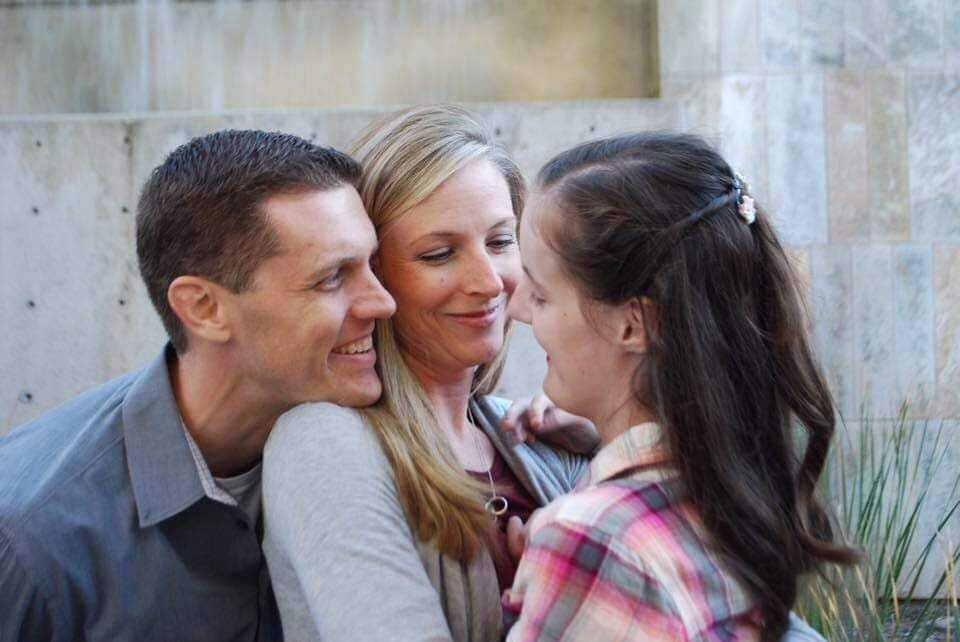



![Kim’s sons Elijah (l) and Isaac (r). [image description: Two young boys with light skin stand closely together with their arms around each other. One wears a blue plaid shirt, the other a yellow t-shirt with the words “Wakanda Forever” and an image of Marvel Comics’ Black Panther.]](https://images.squarespace-cdn.com/content/v1/59d8124080bd5eadd869b8b7/1633014381552-N2JKFLPPH74EF7VXQ3VY/Kim+gould+Crawley+LL+blog.jpg)

![Art by Rob Stone, yarn on ceramic tile. [image description: Pieces of yarn (dark & light blue, light & dark green, red, orange, and yellow) have been dropped in tangled loops on a glossy white ceramic tile and glued into place.]](https://images.squarespace-cdn.com/content/v1/59d8124080bd5eadd869b8b7/1632413342229-TWA0JJKMYL8072SA9GL9/tempImagehuj8oU.png)
![Stock photo. [image description: A young boy (left) with pale skin wears a blue surgical face mask and yellow shirt and carries a royal blue backpack. He elbow-bumps a young girl (right) wearing an identical face mask who has pale skin and braided hair. She wears a blue-striped shirt and carries a pink backpack. The two stand in front of a school building.]](https://images.squarespace-cdn.com/content/v1/59d8124080bd5eadd869b8b7/1631199249508-Y6RIA546S6IZG9LM9CCK/iStock-school+masking.jpg)
![Elvina’s daughter Colby. [image description: A young woman with light-colored skin smiles at the camera; she is seated in a family kitchen. Her brown hair is pulled back from her face. She has braces on her teeth, and wears a gray hoodie.]](https://images.squarespace-cdn.com/content/v1/59d8124080bd5eadd869b8b7/1630597945352-WULI9QCTOR8W6JIF1PN9/colby+street.jpeg)
![Colby and Elvina. [image description: A black and white photo of a mother and daughter. The daughter, to the left, looks away from the camera, smiling. The mother looks directly at the camera.]](https://images.squarespace-cdn.com/content/v1/59d8124080bd5eadd869b8b7/1630597549860-42C9MVF2L0CM085WQ7LF/colby+and+elvina.jpeg)
![Little Lobbyist Simon Hatcher poses in front of the U.S. Supreme Court steps with his dog. [image description: A light-skinned disabled boy poses in his wheelchair in front of the white marble steps of the U.S. Supreme Court. The Court’s Corinthian columns and can be seen in the background. The boy holds the leash of his dog, a large curly white-haired breed whose long pink tongue is sticking out.]](https://images.squarespace-cdn.com/content/v1/59d8124080bd5eadd869b8b7/1629995605073-W50LQ3C7H77TD1OB986W/CA99AE73-C70E-4E49-A812-923AE242AEAF.jpeg)
![Disability activists Mia Ives-Rublee (center, Director of the Disability Justice Initiative at the Center for American Progress) and Elena Hung (right, Co-Founder of Little Lobbyists), two young disability activists, and two dogs in front of the U.S. Supreme Court. [image description: Left to right are seated on the pavement a large white curly-haired dog, a light-skinned boy with glasses, a large white short-haired dog, a light-tan skinned woman with short black hair, a light tan-skinned young girl with black pony tails, and a light-tan skinned woman with black hair pulled back. In the background is the facade of the U.S. Supreme Court.]](https://images.squarespace-cdn.com/content/v1/59d8124080bd5eadd869b8b7/1629995658029-MBBWSFMD04HYOUW6DZC0/7A43971F-1BA0-4FAF-9048-5E1A0EA19D9E_1_201_a.jpeg)
![Nine young Little Lobbyists pose on a tree-lined Washington D.C. street with the U.S. Capitol building in the background. [image description: Nine young children with various skin tones pose on a city street with varying shades of pavement (grey, dark red, tan). Some of the children are in adaptive strollers with medical equipment, others stand. They are all goofing off, adorably.]](https://images.squarespace-cdn.com/content/v1/59d8124080bd5eadd869b8b7/1629995731331-HX9HIZXF46GGX6F1W97D/F163048D-C5AA-4566-AD57-D770D4ED2E1E_1_201_a.jpeg)
![Rob and his disability rights button collection. [image description: A business card on a brown wood table shows a man with light skin sitting in a wheelchair on a grassy hill overlooking the city of Washington DC. He wears sunglasses and a Washington Nationals baseball hat. Four round advocacy pins are placed near the business card: “Meaningful Work Community Inclusion Transcen.org; Little Lobbyists (with their star child & heart logo), “Disability Rights are Civil Rights”; “Health Care Voter.”]](https://images.squarespace-cdn.com/content/v1/59d8124080bd5eadd869b8b7/1629392376323-YJLJ8M57UYT1ROKXV9JP/1545B987-D7FF-4F3D-A8FB-D667CA4C46F1_1_201_a.jpeg)
![Rob at a recent state park outing. [A young man with light skin sits in his wheelchair in front of a colorful wall mural with a Maryland State Map, beneath which is written “Nothing is real until it is experienced.” There are also painted images of a turtle, a crab, and a squirrel visible.]](https://images.squarespace-cdn.com/content/v1/59d8124080bd5eadd869b8b7/1629392486726-9B3VHHALJYISRRKQ6HGP/3F034076-5A0C-4C6F-A79C-8834CE7C9D7A_1_201_a.jpeg)
![Payton (center) with her dad, Randal (left), and her mom, Kristen (right). [image description: A dark-skinned man in a navy blue shirt holds his daughter, who had tan skin and is wearing a pink dress and a pink and white hair bow. The girl’s mother, a white-skinned woman is to the right with long straight brown hair and glasses.]](https://images.squarespace-cdn.com/content/v1/59d8124080bd5eadd869b8b7/1628715929675-Q2WDGYTG8YAPT5XO07XZ/Payton+w+mom+%26+dad.JPG)
![Payton (right) with her dad (left). [image description: A dark-skinned man wearing a knit cap and brown plaid shirt holds his young daughter, who has tan skin and is wearing an aqua jacket. She is looking at bright stained-glass windows.]](https://images.squarespace-cdn.com/content/v1/59d8124080bd5eadd869b8b7/1628716165821-L2205KQJCXJHIPIRYKGR/Payton+%26+dad.JPG)
![Cailyn out in her community, assisted by a direct support aide. [image description: A young disabled teen wearing pink sunglasses and a bright pink outfit sits on an adapted red bike. An aide assists her moving through a sensory “tunnel” (an open pipework on which various objects are suspended).]](https://images.squarespace-cdn.com/content/v1/59d8124080bd5eadd869b8b7/1626797835564-AMEE9ZT6H78F9Y80KLGX/jen+reese+LL+blog.jpg)


![Sandra Stein (r) with her husband Matt (l) and their son Ravi (center) [image description: A white man and white woman pose on either side of a young Black man seated in a wheelchair. All three wear t-shirts with the words, “Caregiving Is Infrastructure.”]](https://images.squarespace-cdn.com/content/v1/59d8124080bd5eadd869b8b7/1626366477314-C9IT63KOWEBTYYNUHZXH/Sandra+Stein.jpg)
![Angela Carpenter Gildner [image description: a white-appearing woman with blond hair poses in a gray “Health Care Voter” t-shirt with a red cushion in the background]](https://images.squarespace-cdn.com/content/v1/59d8124080bd5eadd869b8b7/1625069902659-PF7QBYZ96UN0A9JDEK0W/24hcvangelahq-4.jpeg)
![Graham and Margot [image description: a white-appearing brother and sister, each wearing t-shirt and shorts pose knee-deep in a lake with mountains in the distance on a sunny day]](https://images.squarespace-cdn.com/content/v1/59d8124080bd5eadd869b8b7/1625070133101-2G93ZFC0BPKBTCO65WGO/IMG_8243.jpeg)
![Ron Carlson [image description: A white-appearing man speaks at a lectern with a microphone]](https://images.squarespace-cdn.com/content/v1/59d8124080bd5eadd869b8b7/1624550950455-N0KN4HDRPN6SKZ07K9V7/Ron-Carlson-1030x579.jpg)
![A meeting of the Maryland Regional Direct Services Collaborative [image description: A large group of people sit at tables arranged in a square in a community college meeting room.]](https://images.squarespace-cdn.com/content/v1/59d8124080bd5eadd869b8b7/1624551140263-LE980FUOR10UQ8OPJEAA/Newsletter+-+November+VIP+Luncheon+Picture.JPG)
![Peter Witzler and his family. [image description: A white-appearing father, mother and two young boys pose with their black dog in a wooded area near a stream. All are smiling.]](https://images.squarespace-cdn.com/content/v1/59d8124080bd5eadd869b8b7/1624375996493-55HYNOP8MNBL1IZUECCV/Witlzer+family.jpg)
![Peter and Lisa with Jackson just before his first surgery at three-and-a-half months. [image description: Two white-appearing parents hold their infant son, who wears a Superman cape.]](https://images.squarespace-cdn.com/content/v1/59d8124080bd5eadd869b8b7/1624376089879-IVB3YENZKLIZ37EIGQ24/Witzler+right+before+1st+surgery.jpg)

